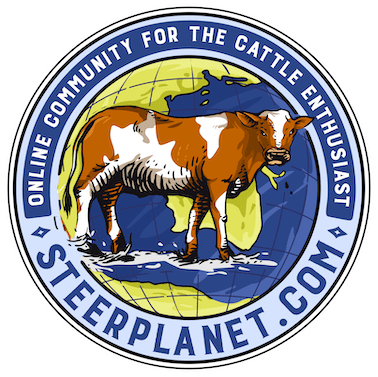3 Eagles shorthorns
Well-known member
- Joined
- Nov 3, 2015
- Messages
- 81
Is it just me or do most of the Canadian cattle look much thicker and deeper Gutted ?

Yes, genetics play a large role but it's nothing compared to the difference in climate
3 Eagles shorthorns said:Is it just me or do most of the Canadian cattle look much thicker and deeper Gutted ?
librarian said:What is an example of deep gutted? I'm not sure what it means. I figured it was the opposite of pinch gutted.
coyote said:I got thinking about deep gutted cattle in warmer climates, does this type survive in Texas Xbar or do they create too much heat in their furnace?
I have been looking at pictures of Australian Shorthorns , you sure don't see too many deep gutted cows down there.
-XBAR- said:coyote said:I got thinking about deep gutted cattle in warmer climates, does this type survive in Texas Xbar or do they create too much heat in their furnace?
I have been looking at pictures of Australian Shorthorns , you sure don't see too many deep gutted cows down there.
I don't think the correlation is between phenotype and climate but rather between size and climate. I would say that the nutritional quality of the available forage in certain areas has played the most significant role in the evolution of phenotypes. Cattle that evolve in areas where the forage is abundant yet nutritionally poor, regardless of the regional temperatures, tend to be bigger barreled and shorter statured. I think this adaptation was one of necessity that allows them to compensate for the lack of forage quality by physically being able to consume tremendous quantity. Conversely, cattle that evolve in environments where the forage quality is high aren't as dependent on having to consume excess quantity. Because of the higher forage quality, the nutritional requirements of the cattle can be met with a relatively modest level of intake.
As far as the Australian shorthorns, I don't think the cattle we see promoted are even remotely acclimated to their environment. Tall, course muscled, and flat sided aren't traits I've come to associate with thriving cattle in an arid, low forage quality environment.
oakview said:Simply put, we either adjust our cattle to our conditions or our conditions to our cattle. Our herd is what I would consider to be practically managed for our area. Alfalfa grows well, far out produces grass, so we use it. I do like a little orchard grass or brome mixed in. I know of several breeders that promote their herd as calving ease that do not feed ANY alfalfa prior to calving. More than one have told me you can add up to 30 pounds to birth weight with alfalfa. We do bale quite a bit of grass hay from poorer ground and utilize corn stalks from time to time.